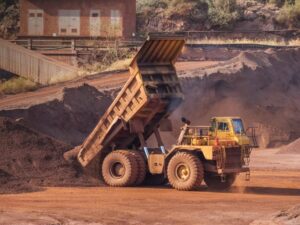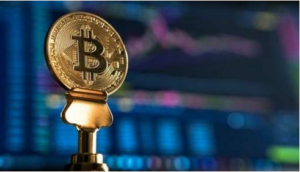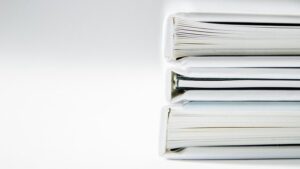
In January-November of this year, Ukraine increased imports of aluminum ore and concentrate (bauxite) in physical terms by 25.9% compared to the same period last year, to 37,944 thousand tons.
According to statistics released by the State Customs Service (SCS) on Friday, during this period, bauxite imports in monetary terms increased by 14.8% to $4.214 million.
At the same time, imports were mainly from Turkey (81.91% of supplies in monetary terms), China (15.62%), and Guyana (2.47%).
Ukraine did not re-export bauxite in 2025, as in 2024 and 2023.
As reported, in 2024, Ukraine increased its imports of bauxite in physical terms by 77.4% compared to 2023, to 35,173 thousand tons, and in monetary terms by 74%, to $4.107 million. Imports were mainly from Turkey (78.48% of supplies in monetary terms), China (19.48%), and Spain (1.9%).
In 2023, Ukraine imported 19,830 thousand tons of bauxite worth $2.360 million.
In 2022, Ukraine reduced imports of aluminum ores and concentrates (bauxite) in physical terms by 81.5% compared to the previous year, to 945,396 thousand tons. Bauxite imports in monetary terms decreased by 79.6% to $48.166 million. Imports were mainly from Guinea (58.90% of supplies in monetary terms), Brazil (27.19%), and Ghana (7.48%).
Bauxite is an aluminum ore used as a raw material for producing alumina, which is then used to produce aluminum. It is also used as a flux in ferrous metallurgy.
Bauxite is imported into Ukraine by the Mykolaiv Alumina Plant (MAP).

In January–November 2025, Ukraine increased its imports of electric generators and rotating electrical converters by 3.2 times compared to the same period in 2024, to $1.513 billion, according to data from the State Customs Service.
The most active suppliers were countries of the European Union. The leaders were Romania — $321.6 million (21.3% of total imports), the Czech Republic — $271.2 million (17.9%), and Poland — $189.1 million (12.5%). For comparison, a year ago, the largest exporters of generator equipment to Ukraine were China (24.2% or $115 million), Turkey (18.5%), and the Czech Republic (15.6%).
In November 2025, generator imports grew by 27.2% compared to November 2024, reaching $116.4 million, but were 38% lower than in October.
Exports of Ukrainian electric generators for 11 months amounted to only $3.6 million (a year earlier — $1.6 million), with the Czech Republic, Latvia, and Bulgaria being the main destinations.
The growth in imports is linked to ongoing programs to strengthen energy security and backup power supply, as well as the current exemption from customs duties and VAT on the import of electric generators, introduced by the Ukrainian government in the summer of 2024.

Imports of electric batteries and separators to Ukraine in January–November 2025 increased by 52% compared to the same period last year and amounted to $1.232 billion, according to the State Customs Service.
China remains the main supplier, accounting for $900.2 million (73.2% of the total volume), followed by Vietnam ($96.7 million, 7.9%) and Taiwan ($54.2 million, 4.4%). For comparison, in 2024, China accounted for 83.2% of imports, while the Czech Republic and Bulgaria accounted for 2.8% and 2.7%, respectively.
In November 2025, battery imports grew by 43.6% compared to November 2024, reaching $177.7 million, which is also 22.6% higher than in October.
At the same time, Ukraine exported batteries worth $47.6 million, which is 26% more than a year earlier. The largest buyers were Poland (32.7%), Germany (13%), and France (11.5%).
The increase in imports of battery systems is explained by steady demand from energy companies, telecom operators, and household consumers, as well as the effect of state subsidies for battery imports, approved in July 2024.
By the end of 2024, total imports of batteries to Ukraine had more than doubled to $950.6 million, and in 2025, they continue to grow rapidly thanks to the modernization of the energy system and the development of the market for autonomous power sources.

The November collapse of bitcoin from levels above $120 thousand to the zone of about $80 thousand was a cold shower for retail investors – primarily young investors, for whom crypto has long become not an exotic, but the main “investment” instrument. But the current correction has not destroyed the interest, but only exposed what professionals have been saying for a long time: in the eyes of some young people, the crypto market looks more and more like high-risk betting rather than classic investments.
A fresh survey by YouGov and Young Men Research Project, published by MarketWatch, shows a generational gap in financial behavior. Among U.S. men ages 18-29:
28% own crypto assets (cryptocurrency and/or cryptocurrency ETFs),
while only 21% are saving for retirement through 401(k) and other classic retirement plans.
Bitcoin remains the “anchor” of the portfolio, followed by Ether and Solana; the share of meme-coin investments is noticeably smaller, but these are the ones that reinforce the impression of a “casino approach” to money management. What’s also important is who exactly we see in these statistics. The research shows:
the higher the income and education level, the more likely a young person is to have both a crypto and a classic retirement account;
among freelancers and those in non-standard forms of employment, crypto is often the only “long term” asset – they simply don’t have access to retirement plans.
So this is not just a story about “irresponsible players” – in many ways it is a reaction to the new conditions of the labor market, where stability and a social package have become a luxury.
For some young people, crypto fulfills several roles at once:
Financial elevator. Against the backdrop of low housing affordability, expensive education and de facto stagnant wages, the temptation to “jump the ladder” through a successful entry into BTC or altcoin is very high. Stories of early holders with X10-X50 fuel expectations.
Part of the online culture. Crypto is embedded in the ecosystem of YouTube, Reddit, X, Discord. There’s also betting, trading, sports betting. For many, it’s a unified medium of pastime and risk. Researchers directly record the intersection of the audiences of cryptoinvestors and online gambling fans.
Distrust of the “old” system. Pensions and traditional funds are associated with bureaucracy, slow returns and lack of control. Crypto, on the contrary, seems to be an instrument of “personal freedom” – even if the real control is limited to knowing a couple of apps and passwords.
All of this makes the crypto market susceptible to waves of FOMO and panic. The November dip after historic highs showed how painful such swings can be for those who went in “on the shoulder of hope” rather than as part of a well-thought-out strategy.
1. The risk of a “lost decade” for personal finances.
If a significant portion of a generation is betting almost exclusively on crypto rather than a diversified portfolio and retirement savings, every major market drawdown sets their financial goals back years. It’s not just about balance sheet decline – it’s about psychological “burnout” from investing itself.
2. Increased market volatility.
The greater the share of participants with a short horizon, high risk tolerance and “game” orientation, the more the market resembles a derivative casino. This amplifies the amplitude of movements and increases the likelihood of sharp drops when macro backdrop or regulatory news deteriorates.
3. Field for regulators.
Crypto’s growing share of youth savings is almost guaranteed to increase regulatory attention, from the US to the EU to emerging markets. Already, restrictions on the marketing of high-risk products, requirements for exchanges to protect unqualified investors, and tighter KYC/AML controls are being discussed.
For countries like Ukraine, where the share of cryptoactive youth is also high, these trends mean an inevitable dialog: how to develop an innovative market without turning it into a mass trap for personal finance.
Outlook: three scenarios beyond November
If we look at the end of the year and 2026 through the lens of retail investors, we can roughly distinguish three scenarios:
“Nervous Stabilization” (baseline).
Bitcoin and large altcoins trade in a wide corridor, some retailers record losses and go into stablecoins or cache, but a core of young holders remain in the market. Crypto is gradually being integrated into more conservative products (ETP, funds), and the growth of interest compensates for the partial outflow of the disappointed.
New wave of euphoria.
Against the backdrop of falling rates, inflows of institutional capital or “Bitcoin in retirement plans” style news, we see a rally again. Young people see the November drawdown as “one more chance to get in” and the market structure becomes even more fragile due to increased shoulder demand.
Regulatory shock.
A major scandal, the collapse of another exchange or a tough package of restrictions in one of the jurisdictions may provoke not only a price spill, but also a mass exit of a part of retail. Against this background, interest in classic instruments (ETFs on indices, bonds, pension plans) temporarily increases.
Which scenario will be realized depends largely on macroeconomics, central bank policy and the depth of future regulatory reforms.
The November collapse showed the main fork for a young investor: to stay in the logic of rates or to switch to the logic of strategy. The answer to this question will determine not only the future bitcoin exchange rate, but also the financial health of an entire generation.

The Dnipro-based Sol Union group of companies has begun construction of the Neo Food System factory in the Kyiv region. The project capacity of the enterprise will allow it to produce 60,000 ready-made meals per day. The factory will produce ready-to-eat chilled, pasteurized, sterilized, and deep-frozen meals. The group’s investment in this project amounts to UAH 220 million.
This was announced by Dmytro Kysilevsky, Deputy Chairman of the Verkhovna Rada Committee on Economic Development. He noted that Sol Union took advantage of several programs of the “Made in Ukraine” policy for the development of Ukrainian manufacturers to implement its current investment projects. In particular, the group took advantage of a state grant of UAH 8 million for processing, purchasing autoclaves manufactured by the Rozfood plant in Kyiv. In addition, the group attracted loans from the “5-7-9” program. It plans to further expand its loan portfolio.
The launch of the plant will create 260 new jobs in the Kyiv region. The production area is 4,000 square meters.
To implement the Neo Food System factory project, the group purchased a ready-made industrial premises that already has the necessary connected electricity, water supply, treatment facilities, and drainage. The installation of the enterprise’s equipment will begin in April 2026. The launch of production is scheduled for June, and the project is expected to reach its design capacity in September 2026. The first exports to EU countries are planned for 2027.
The Sol Union group of companies includes two food production and packaging factories, a vegetable storage facility with a capacity of 5,000 tons, and warehouses with a total area of 17,000 square meters. Until now, all of the group’s enterprises were located in Dnipro.
The “Made in Ukraine” development policy for Ukrainian manufacturers combines state programs aimed at developing production, attracting investment, and stimulating exports.
FACTORY, FOOD, Kysilevsky, PRODUCTION, semi-finished product

BGV Group Management signed a memorandum on further cooperation with two companies in the construction sector during a meeting of the Joint Ukrainian-Saudi Business Council, the BGV press service told Interfax-Ukraine .
The meeting of the Joint Ukrainian-Saudi Business Council brought together representatives of government institutions, relevant organizations, and leading companies from Ukraine and the Kingdom of Saudi Arabia. The Ukrainian side in Riyadh was represented by private companies from key economic sectors, which together employ more than 150,000 people and account for about 4% of the country’s GDP. The total potential of the projects presented in the capital of the Kingdom exceeds $1 billion.
The memorandum signed by BGV Group Management provides for negotiations, exploration of joint opportunities, and planning of specific steps to implement potential projects.
In addition, the BGV team participated in the UNIDO conference, where it discussed future areas of cooperation with partners from Saudi Arabia. The company also joined the promotional event “Investment Dialogue: Mobilizing Gulf Capital For Sustainable Industrial Growth In Ukraine,” where it presented its own investment initiatives, particularly in the field of mineral extraction.
As a result of the Council’s work, the parties agreed to create industry working groups, prepare a roadmap for cooperation, and plan the next meeting in an expanded format.
BGV Group Management is an investment group founded by Gennady Butkevich in 2015. The company has five business areas, within which it develops projects in mining, energy and infrastructure, retail, development, and education and sports. Since 2022, the BGV team has begun to focus on development, given the priority of restoring and constructing new residential, commercial, and other infrastructure facilities in Ukraine.
Since 2022, BGV has begun to focus on development, given the priority of restoring and constructing new residential, commercial, and other infrastructure facilities in Ukraine. In June 2024, a new company, BGV Development, which is engaged in development projects, joined the group. The construction ecosystem includes a manufacturer of aerated concrete under the Poriston brand (formerly Aerok), with three projects completed and five in progress, including the Equides Villas cottage community and two residential projects in partnership with SAGA Development.